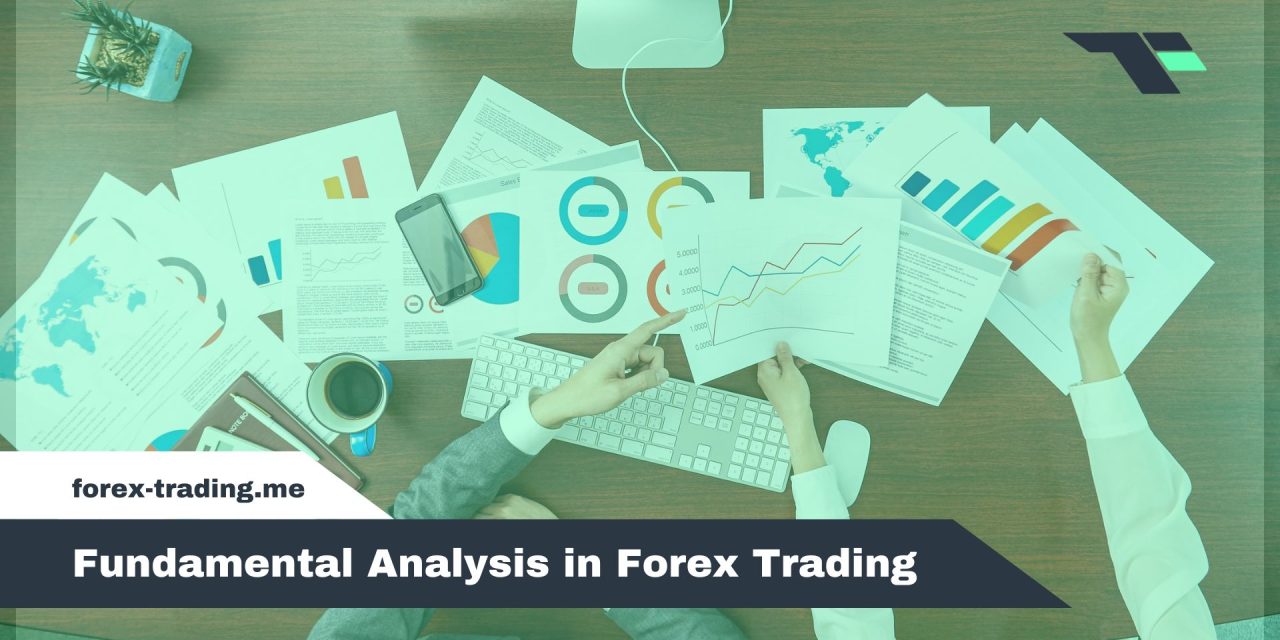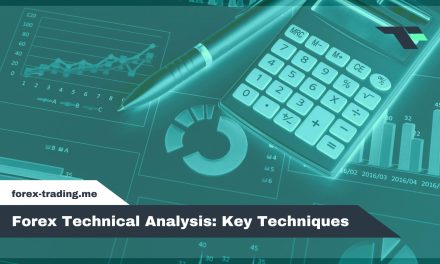
Fundamental Analysis in Forex Trading

Fundamental analysis in forex trading evaluates economic indicators, central bank policies, and macroeconomic data to determine currency values and predict exchange rate movements. Traders examine GDP growth, inflation rates, employment figures, and interest rate decisions to assess a currency’s intrinsic strength. Central bank policies greatly impact currency valuations, as rate adjustments attract foreign investment and influence market sentiment. This analysis identifies long-term trends and enables prediction of policy changes, though data revisions and geopolitical events present risks. Further exploration reveals advanced implementation strategies.
Table of Contents
What Is Fundamental Analysis Forex?
Fundamental analysis in forex trading involves evaluating economic indicators such as GDP growth, inflation rates, employment data, and trade balances to determine a currency’s intrinsic value and predict future price movements. Economic indicators serve as measurable statistics that reflect a country’s economic health, with strong indicators typically strengthening the national currency while weak data often leads to depreciation. Central bank policies, including interest rate decisions and monetary policy statements, represent perhaps the most influential fundamental factors, as these institutions directly control money supply and borrowing costs that affect currency demand in global markets.
Economic indicators overview
When traders seek to understand currency movements beyond price charts and technical patterns, they turn to economic indicators that reveal the underlying health and trajectory of national economies. These indicators serve as fundamental building blocks for currency valuation, providing quantitative measurements of economic performance.
Gross Domestic Product represents the total value of goods and services produced, with the U.S. Bureau of Economic Analysis reporting 2.1 percent growth in Q4 2023. The Consumer Price Index measures inflation pressure, rising 0.4 percent in March 2024. Employment figures, including unemployment rates, reflect labor market strength. The Purchasing Managers’ Index signals manufacturing expansion or contraction, averaging 51.2 globally in Q1 2024. Trade balances indicate import-export relationships, collectively forming the foundation for fundamental currency analysis.
Role of central bank policy
While economic indicators reveal current economic conditions, central bank policy decisions actively shape future currency values through deliberate monetary interventions. Central banks like the Federal Reserve, European Central Bank, and Bank of Japan wield powerful tools that directly influence currency valuations. Interest rate adjustments represent the most immediate mechanism, as higher rates typically strengthen currencies by attracting foreign investment seeking better returns. As of December 2023, the Federal Reserve maintained rates at 5.25-5.50 percent, while the ECB held its deposit rate at 4.00 percent. In 2022, aggressive U.S. rate hikes totaling 425 basis points drove a 7 percent USD appreciation against major currencies, demonstrating policy’s profound market impact.
- Interest rate decisions create immediate currency volatility through yield differential changes
- Quantitative easing programs influence money supply and long-term currency valuations
- Forward guidance communications shape trader expectations and future currency positioning
Having explored how economic indicators and central bank policies serve as the backbone of forex fundamental analysis, it’s useful to see these elements laid out side by side. The following table distills each metric or policy tool, highlights recent data or examples, and explains their typical impact on currency valuation—giving you a concise reference for making informed trading decisions.
| Category | Indicator/Policy | What It Shows | Recent Data/Example | Typical Impact on Currency |
|---|---|---|---|---|
| Economic Indicator | GDP Growth | Overall economic output and growth rate | U.S. GDP grew by 2.1% in Q4 2023 | Higher GDP growth often strengthens the national currency |
| Economic Indicator | Consumer Price Index (CPI) | Inflation pressure and price stability | CPI rose 0.4% in March 2024 | Rising inflation can lead to central bank rate hikes, boosting currency value |
| Economic Indicator | Employment/Unemployment | Labor market strength and consumer spending potential | National unemployment rates vary; strong hiring trends signal robust economy | Lower unemployment typically supports currency appreciation |
| Economic Indicator | Purchasing Managers’ Index | Manufacturing sector expansion or contraction | Global PMI averaged 51.2 in Q1 2024 | PMI above 50 indicates growth, which usually bolsters the currency |
| Economic Indicator | Trade Balance | Difference between exports and imports | Varies by country; a growing surplus often seen in export-driven economies | A surplus can strengthen a currency by increasing demand for exports |
| Policy Tool | Interest Rate Decisions | Cost of borrowing and yield differentials | As of Dec 2023, Fed rate at 5.25–5.50%, ECB deposit rate at 4.00% | Higher rates attract capital inflows, causing currency appreciation |
| Policy Tool | Quantitative Easing (QE) | Central bank bond-buying to expand money supply | 2022 U.S. QE tapering ended after 425 bps rate hikes, contributing to a 7% USD appreciation vs. majors | QE expansion usually weakens currency; tapering or tightening strengthens it |
| Policy Tool | Forward Guidance | Central bank communication shaping future market expectations | Fed signals rate hikes, ECB hints at possible tightening | Clear guidance can reduce uncertainty, stabilizing or strengthening the currency |
Benefits of Forex Fundamental Analysis
Fundamental analysis provides forex traders with distinct advantages that extend beyond short-term price movements, particularly in identifying sustained economic trends that can drive currency values for months or years. This analytical approach offers valuable insights into market sentiment by revealing how economic data, central bank policies, and geopolitical events influence trader psychology and capital flows between nations. The growing significance of fundamental analysis becomes evident when examining forex market dynamics, as institutional participants increasingly rely on macroeconomic indicators to navigate the expanding daily trading volumes that reached $7.5 trillion in 2022.
Identifying long-term trends
One of the most significant advantages of fundamental analysis lies in its ability to identify secular currency trends that persist for months or years, driven by underlying economic disparities between nations. When traders analyze GDP growth differentials, inflation trajectories, and labor market strength across countries, they can uncover persistent currency movements that technical analysis alone might miss. For instance, from 2020 to 2023, the U.S. economy expanded at an average annual GDP growth rate of 2.3 percent, while the Eurozone averaged 1.5 percent, supporting structural USD strength against EUR throughout that period.
- Growth differentials reveal which economies are expanding faster, indicating potential currency appreciation
- Inflation trajectory analysis helps predict central bank policy changes that drive long-term currency movements
- Labor market strength provides insights into economic resilience and future growth prospects
Gaining market sentiment insights
Beyond analyzing long-term economic fundamentals, traders must understand how market psychology and investor sentiment shape currency movements in both predictable and unexpected ways. Market sentiment reflects collective investor emotions, driving risk-on or risk-off behavior that greatly impacts currency pairs. The CBOE Volatility Index (VIX) serves as a primary fear gauge, while CFTC positioning data reveals institutional sentiment shifts.
| Sentiment Indicator | Measurement Method | Trading Signal |
|---|---|---|
| VIX Index | Options volatility levels | Risk-off when above 25 |
| CFTC Positioning | Net long/short positions | Contrarian at extremes |
| Currency Surveys | Bullish/bearish percentages | Fade consensus views |
| Cross-asset flows | Bond yields vs. equities | Risk appetite changes |
| Safe-haven demand | Gold, JPY, CHF strength | Flight-to-quality moves |
In March 2024, CFTC data showed net long USD positions increased fifteen percent, correlating with EUR/USD’s five percent decline, demonstrating sentiment’s predictive power.
FX volume trends
Volume patterns across global foreign exchange markets reveal critical insights that fundamental analysts use to validate currency trends and anticipate potential reversals. The Bank for International Settlements reported global FX daily turnover of $7.5 trillion in April 2022, representing a 30 percent increase from April 2019. This substantial growth reflects heightened market participation and liquidity across electronic trading platforms. Emerging market currencies commanded 20 percent of total turnover, with USD/CNY alone accounting for 4 percent of global volume.
- Electronic platform expansion: Algorithmic trading systems now process majority of FX transactions, creating deeper liquidity pools
- Emerging market participation: Developing economy currencies increasingly influence global trading patterns and volume distribution
- Currency pair concentration: Major pairs like EUR/USD maintain dominance while emerging market crosses gain significant market share
Having explored the multifaceted advantages of integrating fundamental analysis into forex strategies—ranging from uncovering persistent economic trends to interpreting market psychology and tracking liquidity shifts—the table below distills each core benefit. It highlights key focus areas, recent data points, and explains why these insights translate into a tangible edge for traders aiming to anticipate and capitalize on currency movements.
| Benefit Category | Key Elements | Recent Statistics / Examples | Practical Impact |
|---|---|---|---|
| Identifying Long-Term Trends | GDP growth differentials, inflation trajectories, labor market strength | U.S. GDP grew at 2.3 % annually (2020–2023) vs. Eurozone’s 1.5 % | Reveals structural USD strength vs. EUR and guides position timing |
| Gaining Market Sentiment Insights | VIX index, CFTC net positioning, currency sentiment surveys | CFTC data in March 2024: net long USD positions +15 %, coinciding with EUR/USD –5 % | Signals risk-on/off shifts, enabling contrarian entries and exits |
| FX Volume Trends | Global daily turnover, electronic trading, EM currency share | BIS April 2022: $ 7.5 trillion daily turnover (+30 % vs. April 2019), EM currencies 20 % of volume | Validates trend strength and highlights liquidity shifts in major vs. EM pairs |
Key Data Sources for Forex Fundamental Analysis
Successful fundamental analysis depends on accessing accurate, timely economic data from reliable sources that provide thorough coverage of global market indicators. Traders must identify trusted economic news portals that deliver real-time updates on central bank decisions, government policy changes, and macroeconomic releases across major economies. The economic calendar serves as an essential tool for tracking scheduled announcements, enabling traders to anticipate market-moving events and prepare their analytical framework accordingly.
Trusted economic news portals
Five major economic news portals dominate the landscape of forex fundamental analysis, each offering distinct advantages for currency traders seeking reliable market intelligence. Bloomberg News leads with extensive coverage, delivering over 5 million financial updates annually and providing real-time market data alongside expert analysis. Reuters maintains global reach, serving 2 billion people monthly with authoritative economic reporting and central bank coverage. Financial Times offers in-depth policy analysis and commentary from seasoned financial journalists.
- Bloomberg Terminal Integration: Professional-grade data feeds combine news with live market pricing and economic calendars
- Reuters Eikon Platform: Institutional-quality research tools merge breaking news with currency pair analysis and forecasting models
- Forex Factory Community: Specialized forex portal attracts 70,000 monthly users tracking economic releases and market sentiment indicators
CNBC supplements these platforms with accessible television coverage and digital content.
Leveraging the economic calendar
While reliable news portals provide valuable market context, the economic calendar serves as a forex trader’s most indispensable scheduling tool, offering a systematic approach to tracking approximately 50 high-impact economic releases each month. These calendars categorize events by impact ratings, enabling traders to prioritize which releases warrant attention and position adjustments.
| Economic Release | Typical EUR/USD Movement |
|---|---|
| U.S. Nonfarm Payrolls | 60-70 pips intraday |
| Federal Reserve Meetings | 80-120 pips |
| GDP Announcements | 40-60 pips |
The U.S. Nonfarm Payrolls report exemplifies calendar utility, typically moving EUR/USD by 60-70 pips when figures deviate ±50 percent from consensus. Traders align entries with scheduled releases, managing volatility spikes through proper timing and risk assessment protocols.
Having outlined the critical role of reliable news feeds and the economic calendar in shaping forex strategies, it’s helpful to see these data sources distilled into a concise reference. The table below highlights each platform’s strengths, relevant usage statistics, and how traders can leverage them for timely, data-driven decisions.
| Source Category | Platform / Tool | Key Features & Statistics | Trader Takeaway |
|---|---|---|---|
| Economic News Portal | Bloomberg News | Delivers 5 million+ updates annually; integrates real-time pricing with expert analysis via Bloomberg Terminal | Ensures up-to-the-second data on central bank moves and macro releases for rapid response |
| Economic News Portal | Reuters | Reaches 2 billion+ people monthly; provides global coverage of policy changes and FX forecasts through Reuters Eikon | Offers authoritative insights to anticipate market shifts and validate trade ideas |
| Specialized Forex Portal | Forex Factory | Attracts 70 000 monthly users; forums track economic releases, sentiment threads, and impact calendars | Enables peer-driven sentiment checks and community-sourced commentary on high-impact events |
| Financial News Publication | Financial Times | Features deep policy analysis and commentary from seasoned journalists; in-depth coverage of major economies | Delivers contextual perspectives that help traders interpret how geopolitical news may affect currencies |
| Broadcast & Digital Media | CNBC | Provides live TV coverage and digital updates on economic headlines; focuses on accessible, up-to-the-minute market commentary | Supplements real-time data with expert interviews to gauge market confidence and reactions |
| Scheduling Tool | Economic Calendar | Tracks ~50 high-impact releases monthly; categorizes events by impact level; shows typical pip moves (e.g., NFP: 60–70 pips) | Allows traders to prioritize key announcements, align entries with scheduled volatility, and adjust risk accordingly |
Applying Forex Trading Fundamental Analysis
Successful application of fundamental analysis requires translating economic data into concrete trading decisions across major currency pairs, with EUR/USD serving as a prime example given its 24 percent share of global FX volume. Economic releases such as U.S. nonfarm payrolls demonstrate immediate market impact, as evidenced by the April 2024 report showing 253,000 new jobs that triggered a 1.2 percent intraday decline in EUR/USD. Traders must also consider how emerging market developments influence major pairs, as interconnected global economies create ripple effects that extend beyond traditional developed market boundaries.
Analyzing EUR/USD economic reports
The EUR/USD currency pair, representing the world’s most actively traded forex market, responds directly to economic data releases from both the United States and the Eurozone, making comparative analysis of these reports essential for informed trading decisions. Traders must monitor key indicators including GDP growth rates, inflation measurements, and unemployment figures from both regions to identify economic divergences that drive currency movements.
In Q1 2024, the United States demonstrated stronger economic momentum with 0.8 percent quarterly GDP growth compared to the Eurozone’s 0.5 percent expansion. Meanwhile, inflation data showed the U.S. at 3.5 percent versus the Eurozone’s 3.3 percent in March 2024, supporting dollar strength.
- GDP differentials: Compare quarterly growth rates between U.S. and Eurozone economies
- Inflation divergence: Monitor CPI variations that influence central bank policy expectations
- Employment data: Analyze unemployment trends affecting consumer spending and economic outlook
Interpreting Nonfarm Payrolls
How does a single economic report released on the first Friday of each month command such extraordinary attention from forex traders worldwide? The answer lies in the Nonfarm Payrolls (NFP) report, which measures U.S. employment changes excluding farm workers, government employees, and nonprofit organization staff. This Bureau of Labor Statistics publication provides critical insights into economic health, directly influencing Federal Reserve policy decisions and USD strength.
NFP surprises create immediate market volatility, as demonstrated in April 2024 when payrolls exceeded expectations by 73,000 jobs, causing the U.S. dollar index to surge 0.7 percent within one hour. Traders monitor both headline payroll figures and unemployment rates, seeking deviations from consensus forecasts. Strong employment data typically strengthens the dollar, while disappointing numbers can trigger sharp declines across major currency pairs.
Assessing emerging markets’ influence
Economic powerhouses beyond traditional developed nations now wield unprecedented influence over global currency movements, fundamentally reshaping how traders approach major forex pairs. Emerging markets comprised 20 percent of total foreign exchange turnover in April 2022, with USD/CNY representing 4 percent and USD/BRL accounting for 1.5 percent of global trading volume.
China’s robust 5.2 percent GDP growth in 2023 demonstrated this influence, triggering a 4 percent year-to-date appreciation in commodity-linked currencies like the Australian dollar. Traders must monitor emerging market developments as capital flows between these economies and developed nations create ripple effects across major pairs.
- GDP growth rates in China, India, and Brazil directly impact commodity demand and related currency pairs
- Capital flow patterns from emerging markets influence USD strength and major pair volatility
- Commodity price movements driven by EM consumption affect currencies like AUD, CAD, and NZD
Having examined the theory behind fundamental analysis, the following table demonstrates how traders convert macroeconomic insights into specific, actionable forex decisions. It highlights three core areas—EUR/USD report comparisons, Nonfarm Payrolls interpretations, and emerging market influences—showing key data points and how each translates into real-world trading strategies.
| Focus Area | Key Components | Latest Figures / Examples | Trader Takeaway |
|---|---|---|---|
| Analyzing EUR/USD Reports | Compare U.S. vs. Eurozone GDP, inflation, unemployment | Q1 2024: U.S. GDP +0.8% vs. Eurozone +0.5%; March 2024 inflation: U.S. 3.5%, Eurozone 3.3% | Divergence underscores USD strength; enter short EUR/USD when U.S. data consistently outpaces Eurozone |
| Interpreting Nonfarm Payrolls | Headline payrolls, unemployment rate deviations | April 2024: +253,000 jobs; NFP surprises of +73,000 drove USD index +0.7% in one hour | Anticipate 60–70 pip EUR/USD moves on NFP surprises; use strict stops to manage volatility |
| Assessing Emerging Markets’ Influence | EM GDP growth, capital flows, commodity demand | April 2022: EMs 20% of FX turnover; USD/CNY 4%, USD/BRL 1.5%; 2023 China GDP +5.2% led AUD +4% YTD | Monitor EM growth for AUD/CAD/NZD entries; adjust USD positions when EM capital flows shift significantly |
Combining Forex Fundamental Analysis & Technical
While fundamental analysis provides the strategic direction for forex trades based on economic conditions, technical analysis offers precise timing for market entry and exit points. Successful traders increasingly combine these methodologies by using chart patterns, moving averages, and momentum indicators to confirm signals generated from macroeconomic data and central bank announcements. This hybrid approach reduces false signals and enhances trade accuracy, as technical indicators can validate whether market sentiment aligns with fundamental expectations before committing capital to a position.
Integrating charts with economic data
Although fundamental analysis provides the “why” behind currency movements and technical analysis reveals the “when” and “where,” traders achieve ideal results by systematically combining both approaches through chart integration techniques. Overlaying economic data releases directly onto price charts creates an extensive trading framework that reduces emotional decision-making and improves timing precision.
Studies demonstrate that implementing event markers for high-impact releases reduces trader overreaction by 20 percent. For instance, marking NFP dates on EUR/USD daily charts reveals consistent 50-70 pip movements, enabling traders to anticipate volatility patterns and adjust position sizes accordingly.
- Event markers: Plot CPI, GDP, and employment data release dates directly on price charts to identify correlation patterns
- Volatility bands: Expand or contract position sizes based on upcoming fundamental event schedules and historical price reactions
- Chart annotation: Label significant central bank decisions and geopolitical developments to track their ongoing market impact
Confirming signals strategically
Strategic signal confirmation serves as the critical filter that separates profitable trades from costly false breakouts, particularly when fundamental news creates sudden market volatility. Traders must wait for candlestick confirmation patterns that validate the fundamental narrative before entering positions. Support and resistance confluence strengthens signal reliability, especially when price action approaches these levels following major economic releases. Momentum indicators like RSI provide additional verification, with divergences offering particularly valuable confirmation signals. Research indicates that strategies combining fundamental triggers with RSI divergence achieved a 0.8 risk-reward ratio in 2023, outperforming pure fundamental entries by 10 percent. Breakout validation requires multiple confirmatory signals working together, reducing the likelihood of premature entries that fundamental analysis alone might suggest during high-impact news events.
Drawing on the strengths of both macroeconomic insights and chart-based timing can transform how traders approach the markets. The table below distills the essential methods for overlaying fundamental events onto price charts and for filtering signals with technical confirmation—enabling clearer entry points and reduced risk during high-impact news.
| Focus Area | Key Components | Data / Examples | Trader Takeaway |
|---|---|---|---|
| Integrating Charts with Economic Data | Event markers, volatility bands, chart annotation | Event markers reduce overreaction by 20%; NFP dates on EUR/USD show 50–70 pip moves | Overlay CPI, GDP, and employment release dates on your charts; adjust position sizes around these events |
| Confirming Signals Strategically | Candlestick confirmation, support/resistance confluence, RSI divergence, breakout validation | Combining fundamental triggers with RSI divergence achieved a 0.8 risk-reward ratio in 2023, 10% better than fundamentals alone | Wait for candlestick or RSI confirmation at key levels before entering; use confluence to avoid false breakouts |
Risk & Limitations in Forex Fundamental Analysis
While fundamental analysis provides valuable insights into currency movements, traders must recognize its inherent limitations and associated risks to maintain consistent profitability. Economic data releases often arrive with significant delays, face subsequent revisions that can alter market interpretations, and may trigger unexpected volatility spikes that challenge even well-researched positions. Additionally, sudden geopolitical events can overwhelm fundamental projections, creating rapid market dislocations that require immediate risk management adjustments.
Managing risk with fundamental signals
Position sizing emerges as the cornerstone of effective risk management when trading fundamental signals, requiring traders to calculate precise exposure levels before economic releases trigger market volatility. Professional traders typically risk only 1–2 percent of their account per trade, maintaining average drawdowns below 4 percent during unexpected macroeconomic surprises. Strategic stop-loss placement proves equally critical, with ideal positioning occurring 30 pips beyond expected volatility levels to reduce slippage by 15 percent.
- Position sizing: Limit exposure to 1–2 percent of account balance per fundamental trade to control maximum drawdown
- Stop-loss placement: Set orders 30 pips beyond anticipated volatility ranges to minimize execution slippage during news events
- Portfolio diversification: Spread fundamental positions across multiple currency pairs to reduce concentration risk from single economic announcements
Data limitations & revisions
The volatility of economic data presents a significant challenge for forex traders who rely on fundamental analysis, as initial economic releases frequently undergo substantial revisions that can invalidate original trading premises. The U.S. Bureau of Economic Analysis exemplifies this issue by revising GDP estimates twice after initial publication. In 2023, preliminary Q2 GDP growth of 2.0 percent was subsequently revised downward to 1.4 percent, demonstrating how second releases can differ substantially from initial estimates. These data revisions create statistical accuracy problems that directly impact trading outcomes, with reporting lags often extending several weeks or months. Such revisions can shift currency pair movements by 50 pips, effectively reversing short-term trade results and highlighting the inherent risks of overreliance on first-release economic numbers.
Impact of geopolitical events
When unexpected geopolitical events strike global markets, even the most robust fundamental analysis can become obsolete within hours, as political developments possess the power to override established economic trends and trigger massive currency volatility. Elections, trade disputes, military conflicts, and political instability can spark rapid currency movements that contradict fundamental indicators. The 2016 Brexit referendum exemplified this phenomenon when GBP depreciated 8 percent against USD within two trading days, while the 2022 Ukraine conflict caused USD/RUB to surge 10 percent in 72 hours.
- Political elections can reverse currency trends overnight as markets react to policy uncertainty
- Trade disputes between major economies create immediate volatility in affected currency pairs
- Military conflicts trigger flight-to-safety flows, strengthening reserve currencies like USD and JPY
Having reviewed how fundamental analysis can yield powerful insights, it’s equally important to appreciate its pitfalls and prepare accordingly. The table below highlights the principal risk factors—risk management techniques, data reliability issues, and geopolitical shocks—offering concrete data points and actionable strategies for staying ahead when fundamentals falter.
| Focus Area | Key Components | Data / Examples | Trader Takeaway |
|---|---|---|---|
| Managing Risk with Fundamental Signals | Position sizing, stop-loss placement, portfolio diversification | Risk 1–2 % of account per trade to keep drawdowns under 4 %; set stops 30 pips beyond expected volatility to reduce slippage by 15 % | Limit each fundamental-based position to 1–2 % of capital, use wider stops around data releases, and diversify across pairs to absorb shocks |
| Data Limitations & Revisions | Initial estimates vs. revisions, reporting lags, statistical accuracy | In 2023, U.S. Q2 GDP prelim 2.0 % was revised to 1.4 %, causing 50 pip reversals in some currency pairs | Treat first-release figures cautiously, consider waiting for second releases or scaling into positions to mitigate reversal risk |
| Impact of Geopolitical Events | Elections, trade disputes, military conflicts, sudden policy shifts | Brexit referendum (GBP fell 8 % vs. USD in two days); Ukraine conflict (USD/RUB surged 10 % in 72 hours) | Always have contingency plans: tighten stops, reduce position sizes, or hedge exposures when major political events loom |
Conclusion
Fundamental analysis provides forex traders with essential tools for understanding currency movements through economic data, central bank policies, and geopolitical events. While offering valuable insights into long-term trends and intrinsic currency values, this approach requires significant time investment and economic knowledge. Successful implementation often involves combining fundamental analysis with technical indicators to enhance timing and decision-making. Traders must remain aware of market sentiment and unexpected events that can override fundamental factors.

















